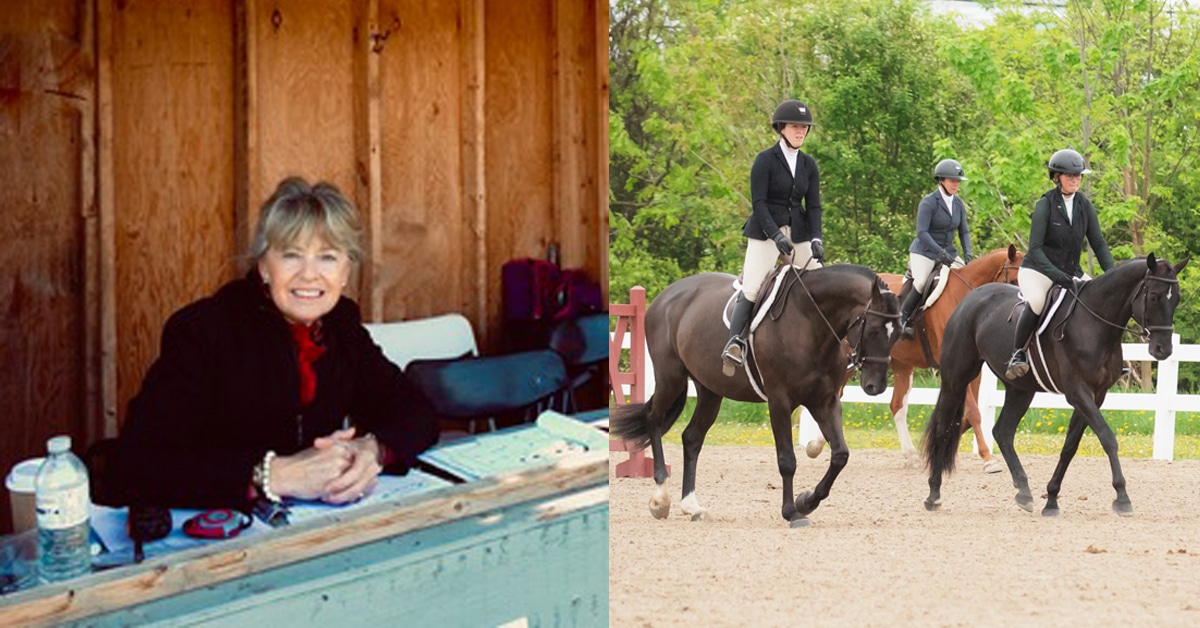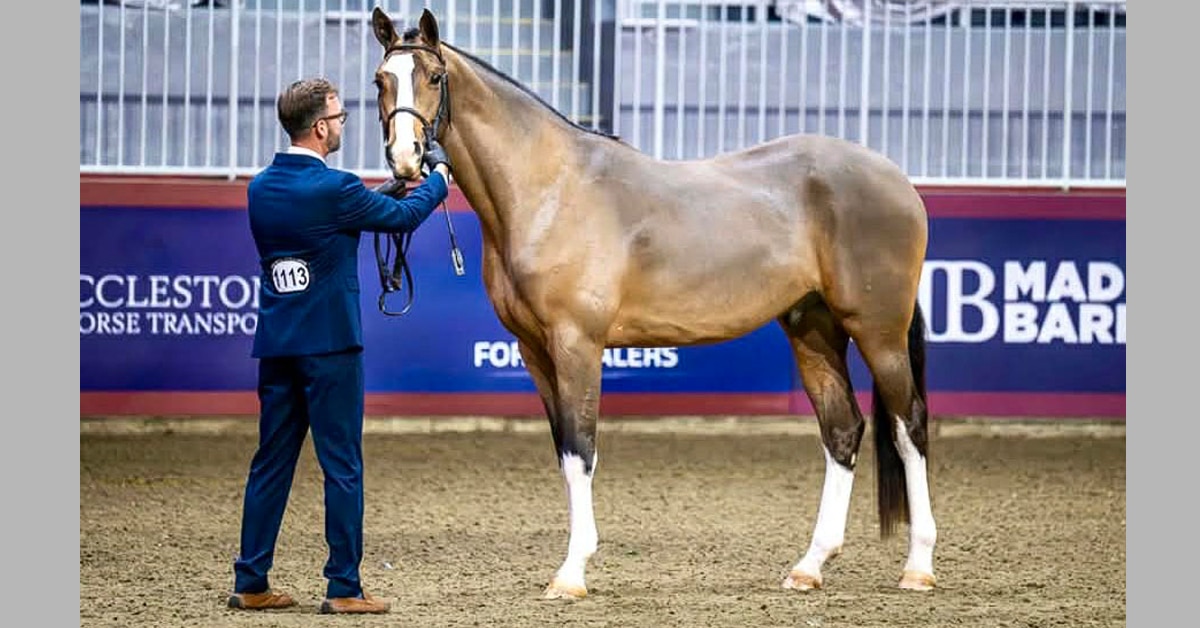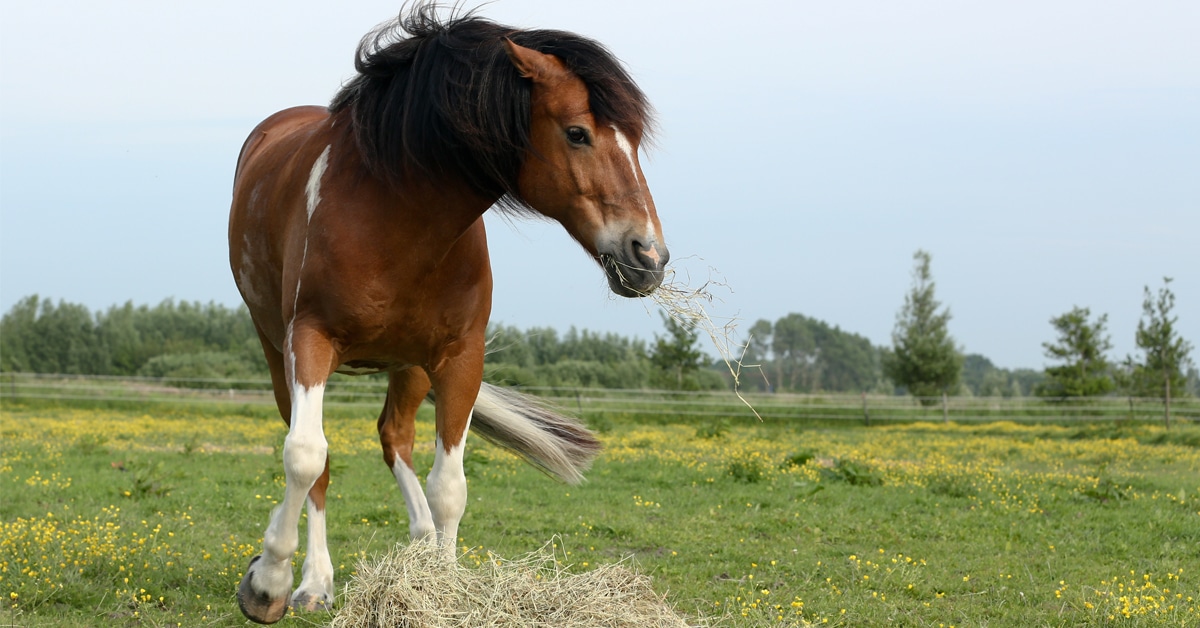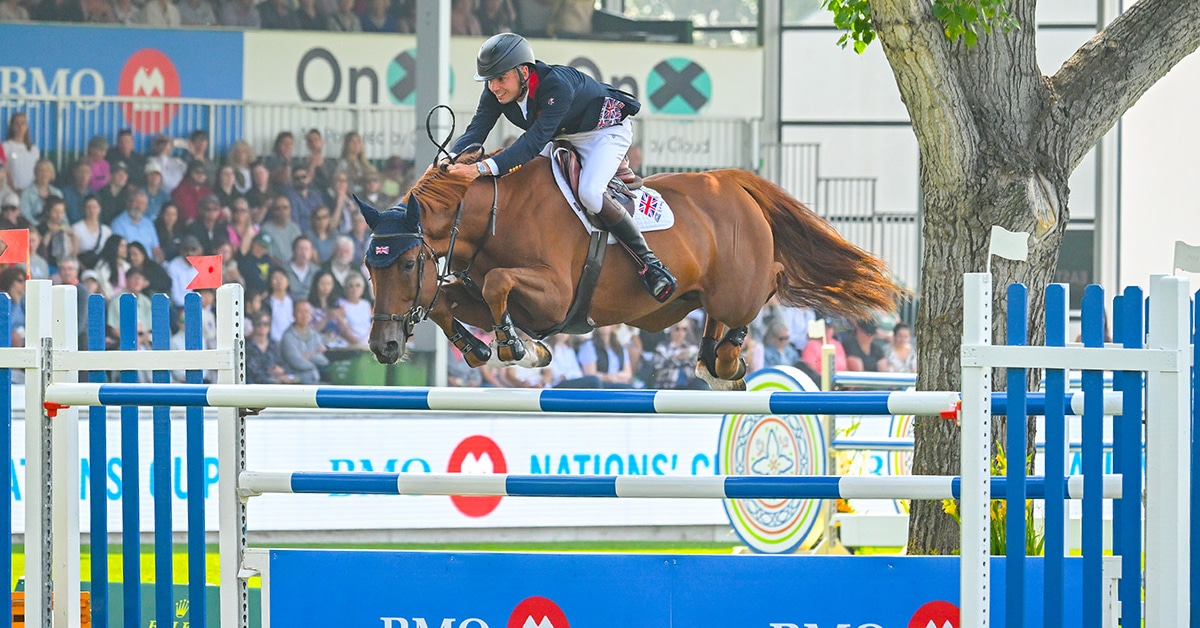The average breeding cycle of a mare lasts three weeks (19-22 days) and can be divided into two phases. The estrous phase, when she is ‘in heat’, receptive to a stallion and able to conceive, usually lasts five to seven days. The hormone estrogen is being produced by the ovaries at peak levels during this phase. The period between each heat is called the diestrous phase, which usually lasts about two weeks. The hormone progesterone is produced during this phase, and mares are usually not receptive to the advances of a stallion. Anestrous is when the mare is not cycling – usually during the winter or for a few months after foaling.
Girls Behaving Badly
While it can be difficult to tell when some mares are in heat, others develop extreme behaviours that can interfere with training or showing, or be outright dangerous. These horses are often well-behaved when not in season, but become strong-willed or aggressive during heat. They can become very vocal, constantly calling to other horses, squealing, flagging their tails, urinating excessively, ‘winking’ with the vulva, squatting, kicking, biting and striking while being handled, and bucking or refusing to respond to the rider while under saddle.
Veterinary intervention is often sought to keep this type of mare tractable and delay (or prevent altogether) her normal estrous cycle. There are several methods to achieve this:
Turning Off the Heat
The most effective method of preventing a mare from coming into estrous is to encourage the corpus luteum – the remains of the follicle once the egg has burst from it – to continue to produce endogenous progesterone as if the mare was pregnant. The most common way to do this is through daily oral administration of a synthetic progestin such as Regu-Mate® (altrenogest). Manufacturer claims state that Regu-Mate effectively suppresses estrous in 95 per cent of mares after three days of treatment, and when treatment is discontinued, mares return to normal estrous cycles within a few days.
Another treatment that some beleaguered mare owners swear by is injectable Depo-provera (medroxyprogesterone), which is intended for human use. Studies have shown, however, that Depo-provera does not reliably control estrous in mares in the long-term (or at all in some). Daily or weekly progesterone injections can cause pain and fibrous lumps at the injection site, and the resulting stiff neck can be more of a handicap to performance than the behaviour you are trying to suppress.
Humans must take care when handling both these products, wearing protective gloves and avoiding skin contact. Pregnant women, whether confirmed or suspected, should not handle synthetic progestins. Mares with a history of uterine inflammation may develop severe uterine infections while being given progestins, which suppress uterine immune response.
The Ersatz Embryo
The simple idea of inserting a glass ball into the uterus of a mare to trick the uterine lining into believing there is an embryo present has been in use since researchers at the College of Veterinary Medicine at Auburn University released their findings in 2001. While it is unclear exactly why it works, it appears that the marble mimics an early developing embryo and encourages the corpus luteum to continue to function. While it does not work with all mares, some vets report a success rate of up to 67 per cent in suppressing estrous for an average of three or four months.
Advantages to this procedure include ease of accomplishment, safety, and low rate of complications. Cleanliness during the insertion is essential, however, as it would be during artificial insemination, in order to avoid infection. The balls are essentially high-grade marbles and can be obtained from a number of sources, including a dedicated website – www.glassmarble.com/MareMarbles.html. Some practitioners have even had good luck using silicon eye prosthetics! A 35-mm sphere seems to work the best, inserted vaginally into the uterus and then manipulated into place via rectal palpation. An ultrasound can confirm correct placement.
Abortion
A rather controversial technique involves inseminating the mare and then squeezing and rupturing the fertilized ovum to destroy it. The corpus luteum continues to produce progesterone, preventing the mare from coming into heat for up to three months. Disadvantages to this method – besides the possible moral issues surrounding aborting a developing fetus – include the need for repeated exams before and after insemination and the expense of a source of semen.
Spaying
While gelding a colt is a routine occurance, spaying a mare is less commonly performed. It can be a permanent solution, however, if the mare is displaying dangerous behaviour because of hormone imbalances due to a granulosa cell tumor (GCT) or cycts in one or both ovaries. Symptoms include nymphomania (constant heat), or stallion-like behavior due to an increase in testosterone, manifested by a crested neck and enlarged clitoris.
Surgical removal of the tumour and/or ovaries has proven to eliminate this undesirable behavior in a majority of cases. Mares who are solid performers in the show ring, but unlikely candidates for breeding, can benefit from spaying if they are uncontrollable during heat.
Spaying is a major surgery which can be accomplished via three methods: abdominally under general anesthesia (the most expensive – 90 days recovery); through the flank with the patient standing using tranquilizer and local anesthetic (slightly less expensive – 30 days recovery); and vaginally under tranquilizer and local anesthetic (least expensive – 10 days recovery). All surgeries carry a risk of post-operative complications such as colic, and the mare must be free from reproductive tract infection beforehand.
A spayed mare will not exhibit any physical changes – she will still look “feminine” after her ovariectomy and she will not get pudgy. The only difference will be her more agreeable temperament.
Silent Heat
At the other end of the scale, anestrous mares show no hormonal activity, which is fine for the competitor, but annoying for the breeder. Silent heats are commonly seen during lactational anestrous – the three-month period following foaling while the foal is nursing. Some mares will show on the “foal heat” which is five days to two weeks after foaling, and never again. She may actually be cycling normally, but because of her foal at foot she won’t respond to teasing or stand to be bred. Regular rectal palpation or ultrasound can determine if the mare is actually producing a follicle. A blood-progesterone assay can determine if her progesterone levels are indicative of her having ovulated. Estrous can be induced in the “behaviourally anestrous” mare with the hormones prostaglandin and estradiol.
Mommie Dearest
There are a number of bizarre and violent behaviours that broodmares can display. Perhaps the most distressing occurs when mares, especially maidens, attack their newborn foals and may even try to kill them. This can be a shocking and heartbreaking turn of events for the breeder, and swift intervention is needed to save the life of the foal.
If the mare tries to bite, kick, shake or throw the tiny intruder, they must be separated immediately. Move the mare to a less confined area and try reintroducing the foal with attendants present to protect it. The mare can also be restrained and placed in a sectioned-off portion of the stall until she gets accustomed to the foal’s presence. Position her as to avoid visual contact with other horses for a few days, and restrict the number of unfamiliar people in the area. Administering oxytocin or progestin can help reduce aggression.
Some of the contributing factors to foal rejection include too many people in the foaling area, the presence of other mares, illness, or exhaustion of the mare after a particularly long or stressful foaling period. Removing the expelled placenta from the stall too soon can also have a negative impact, as the mare associates the smell of birth fluids and membranes as hers, and thus associates the foal as hers. It is believed that even the pain of passing the placenta can also interfere with bond formation. A simple food-related aggression can be solved by tying the mare or removing the foal while she has her dinner.
Iatrogenic foal rejection results when a foal’s odour changes, usually due to clinical treatment. Masking the foal’s scent by applying mentholated ointment to the mare’s nostrils and the foal’s head and rectal area can help. Draping the afterbirth, if it is available, over the foal is also beneficial.
Other maternal behaviour problems include ambivalence of the mare toward her foal, fear of the foal, avoidance of the foal while nursing, extreme protectiveness, and less common, stealing another mare’s foal. In cases where the mare and foal’s relationship cannot be salvaged, foster or nurse mares may have to be utilized, or the foal may have to be hand-reared (websites such as www.cyberfoal.com connect orphan foal owners to nurse mares).
The vital colostrum, or “first milk,” contains essential antibodies which provide immunity for the foal. If the mare refuses to allow it to nurse, kicking or walking away from it, she may be experiencing udder pain. As long as she is not suffering from mastitis, she may have to be restrained by holding up a leg to discourage kicking, or tying her so she cannot turn and bite the foal. The use of tranquilizers should be discouraged, as they will be expelled in the milk and subsequently sedate the foal. The mare can also be hand-milked to provide the foal with colostrum, then gradually reintroduced to her baby.
Gently handling the teats and udder regularly for a few weeks prior to parturition can desensitize the mare to the sensation of nursing. Thankfully, most mares quickly get over any transgressions following the birth and become attentive and tender mothers.
The Latest









